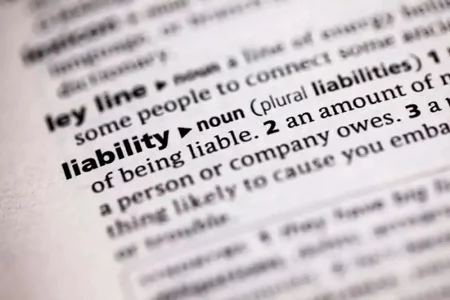Content

The sealed bids method is the preferred method for procuring construction, if the https://www.bookstime.com/. In cases where a non-Federal entity fails to take appropriate disposition actions, the Federal awarding agency may direct the non-Federal entity to take disposition actions. When acquiring replacement equipment, the non-Federal entity may use the equipment to be replaced as a trade-in or sell the property and use the proceeds to offset the cost of the replacement property. A state must use, manage and dispose of equipment acquired under a Federal award by the state in accordance with state laws and procedures. Other non-Federal entities must follow paragraphs through of this section.
The amount allocated to the student category must be assigned to the instruction function of the institution. The amount allocated to the employee category must be further allocated to the major functions of the institution in proportion to the salaries and wages of all employees applicable to those functions. Announcements must clearly identify the types of entities that are eligible to apply. If there are no restrictions on eligibility, this section may simply indicate that all potential applicants are eligible. If there are restrictions on eligibility, it is important to be clear about the specific types of entities that are eligible, not just the types that are ineligible.
Project type
However, non-Federal Indirect Cost may set standards for situations in which the financial interest is not substantial or the gift is an unsolicited item of nominal value. The standards of conduct must provide for disciplinary actions to be applied for violations of such standards by officers, employees, or agents of the non-Federal entity. Real property, equipment, and intangible property, that are acquired or improved with a Federal award must be held in trust by the non-Federal entity as trustee for the beneficiaries of the project or program under which the property was acquired or improved. The Federal awarding agency may require the non-Federal entity to record liens or other appropriate notices of record to indicate that personal or real property has been acquired or improved with a Federal award and that use and disposition conditions apply to the property. If it is anticipated that the period of performance will include multiple budget periods, the Federal awarding agency must indicate that subsequent budget periods are subject to the availability of funds, program authority, satisfactory performance, and compliance with the terms and conditions of the Federal award.

Where approved by the Federal cognizant agency for indirect costs, these plans are acceptable as an alternative to the requirements of paragraph of this section. Some nonprofit organizations, because of their size and nature of operations, can be considered to be similar to for-profit entities for purpose of applicability of cost principles. Such nonprofit organizations must operate under Federal cost principles applicable to for-profit entities located at 48 CFR 31.2. A listing of these organizations is contained in appendix VIII to this part. Other organizations, as approved by the cognizant agency for indirect costs, may be added from time to time.
Budgets
If a non-Federal entity requests a copy of the full text of the general terms and conditions, the Federal awarding agency must provide it. If applicable, the Federal awarding agency may inform applicants and recipients that they do not need to provide certain information otherwise required by the relevant information collection. The Federal Assistance Listings is the single, authoritative, governmentwide comprehensive source of Federal financial assistance program information produced by the executive branch of the Federal Government. The Federal awarding agency must notify the public of Federal programs in the Federal Assistance Listings maintained by the General Services Administration .
- The Intercollegial/Departmental Agreement on the Distribution of F&A Costs should be used to detail the intention to split F&A only in lieu of establishing companion projects at time of award.
- When a Federal awarding agency makes a Federal award that provides support for construction and non-construction work, the Federal awarding agency may require the recipient to obtain prior approval from the Federal awarding agency before making any fund or budget transfers between the two types of work supported.
- The administrative expenses of the dean’s office of each college and school must be allocated to the academic departments within that college or school on the modified total cost basis.
- University research, for purposes of this document, must be combined with sponsored research under the function of organized research.
- Federal awarding agencies and pass-through entities must not impose any other access requirements upon non-Federal entities.
- The officers, employees, and agents of the non-Federal entity may neither solicit nor accept gratuities, favors, or anything of monetary value from contractors or parties to subcontracts.
